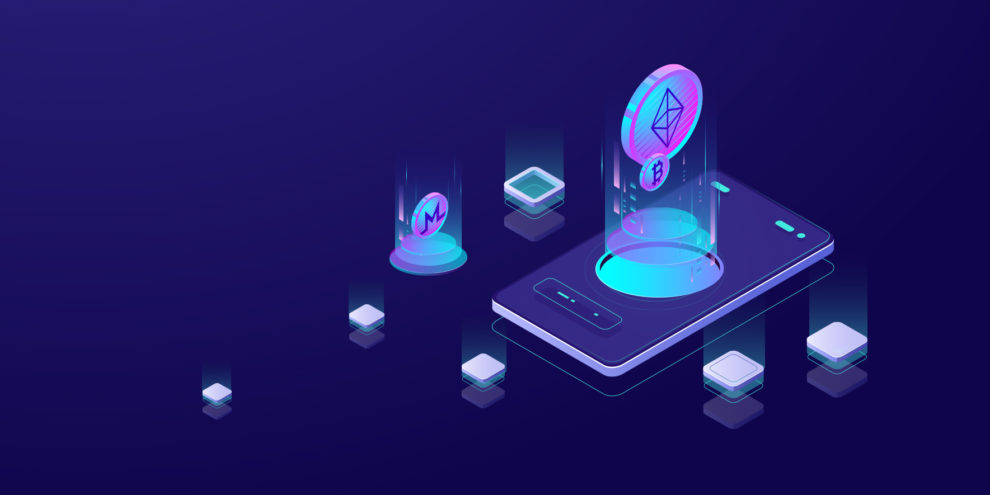A blockchain is a distributed database that records transactions and stores them as blocks linked by cryptographic methods. Each block contains a unique hash code that references the previous block, which ensures the integrity and immutability of the data. And as more and more users prioritize decentralization, security and transparency, blockchain app development is becoming more relevant and in demand.
Technology can be used in a variety of areas, such as:
- Finance and banking: to create cryptocurrencies and digital assets, and to process financial transactions faster.
- Logistics and supply chain: to track shipments and goods in the supply chain, thereby reducing the risks associated with counterfeiting and theft.
- Healthcare: to store medical data and make sure that only the appropriate people have access to it.
- Voting: for online voting, which can improve democratic participation.
- Intellectual Property: to protect intellectual property rights such as copyrights and patents.
- Smart contracts: to create and execute smart contracts that automatically fulfill the terms specified in the contract.
These are just a few examples. Because of its features, the technology can be applied to many other areas where transparency and immutability of data are important.
Trends in Blockchain App Development
There are several trends in development that are becoming increasingly popular:
- DApps are not centrally managed. They use smart contracts and protocols that provide security.
- Interoperability: is the ability to communicate between different networks that use different protocols. This allows for broader ecosystems that integrate many different platforms.
- Improved scalability: is the process of increasing throughput so that it can handle more transactions per second. This can be achieved through data compression mechanisms, parallel processing, and using more efficient consensus algorithms.
- Privacy enhancement: this is the ability to protect personal data. This can be achieved through data encryption and various privacy technologies.
- New applications: the technology continues to find new applications in various areas such as identification, risk management, quality assurance and proof of origin.
These are just some of the trends that are gaining popularity and leading to technological developments.
The Most Popular Blockchain Projects
- Bitcoin is the most popular cryptocurrency that is based on blockchain technology. Bitcoin provides the ability to transfer funds between members of the network.
- Ethereum is a platform for creating DApps. Ethereum allows the creation of smart contracts that can be used to automate various business processes.
- Binance Smart Chain provides the ability to create DApps and issue its own tokens.
Benefits and Risks in Blockchain App Development
The advantages of creating such a startup are as follows:
- Decentralization: there is no central management and control, which makes them more transparent and reliable.
- Transparency and traceability of transactions, which can be especially important for data accounting in various industries such as finance, healthcare, and logistics.
- Security: Encryption and other data protection mechanisms, making data more secure.
- Efficiency: speeding up data processing and transactions, which can be especially useful for large volumes of data and transactions.
- Low cost: Reduce the cost of intermediate services as they work directly between network members, without intermediaries.
But since the technology is still fairly new, and people are just beginning to get into it, you have to be prepared for some risks.
- Low technology maturity: The technology is still under development and some aspects may be unstable or not fully developed.
- Lack of expertise: Requires specialized expertise and experience in different areas such as cryptography, networking, and economics.
- High costs: may require significant investment in the early stages of development, including hardware, software, and personnel costs.
- Security issues: although there is a high level of protection, there are vulnerabilities associated with misuse or system disruption.
- Regulation: Projects may be subject to regulation by governments and other organizations, which can reduce
What Factors Should Be Considered When Building a Blockchain App?
Before developing a blockchain app it is important to consider some of the factors and nuances:
- Choosing the right platform: there are many different platforms such as Ethereum, Hyperledger Fabric, Corda, and others. You need to choose the platform that best meets the requirements of the project.
- Development of smart contracts: smart contracts are a key element, so enough time and resources must be devoted to the development and testing of smart contracts.
- Compliance with hacking and abuse protection requirements, so attention must be given to these aspects.
- Version control and management: it is important to have a version control and version control system in development.
- Integration with other systems: projects can be used in different areas, so you need to be able to integrate with other systems and applications to provide efficient operation.
- Support and upgrade mechanisms must be provided to make sure that the application is stable in the long run.
Basic Steps of Blockchain App Development
Here are the basic steps that are usually included in the implementation process:
- Definition of requirements and scope: define the purpose of the app, its core functionality, business model, and target audience.
- Choosing a platform: select the platform that best meets the requirements.
- Development of smart contracts: smart contracts are a key element. Define the logic behind smart contracts and develop them using Solidity programming languages or other appropriate languages.
- Front-end development: develop a user interface to interact with the application. This could include a web app, a mobile app, or a desktop app.
- Testing: testing the application to detect and fix bugs and flaws. This can include testing functionality, performance, and other aspects.
- Deployment: deploy the application to the chosen platform and publish it to users.
- Support and update: provide support and updates to the application to guarantee that it works consistently over the long term. This can include fixing bugs, adding new features, and updating smart contracts.
Conclusion
Blockchain app development is the process of creating apps that use technology to provide transparency. One of the main benefits is the ability to remove the need for centralized management, which provides greater transparency. They can be used in a variety of areas, including finance, medicine, logistics, etc.
However, there are several factors to consider, including platform selection, smart contract design, testing, deployment and support, and upgrades.
Overall, such a product presents great potential to innovate and improve existing systems. Companies and entrepreneurs who want to use technology to create new applications should consider the benefits and risks and follow basic steps to guarantee success.













